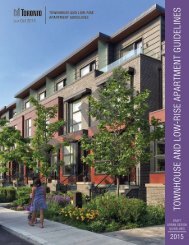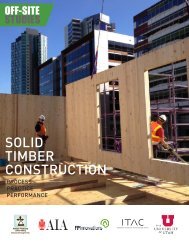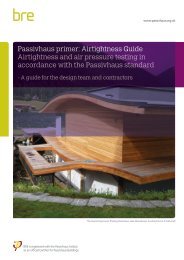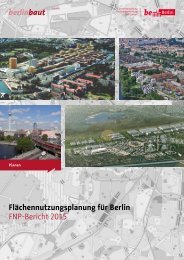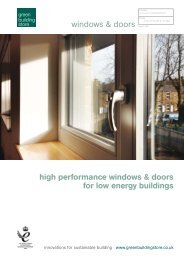TRUE URBAN SPIRIT
b008379b
b008379b
Create successful ePaper yourself
Turn your PDF publications into a flip-book with our unique Google optimized e-Paper software.
2 VIENNA: BUILDING THE FUTURE<br />
2.2<br />
SPACE FOR<br />
<strong>URBAN</strong> GROWTH<br />
High-quality urbanity<br />
High-quality urbanity in urban quarters can be<br />
attained if certain qualities of development<br />
density are a given:<br />
| tightly knit circulation network due to<br />
suitable block sizing<br />
| functioning social infrastructure and local<br />
supply facilities<br />
| high housing quality due to housing design<br />
geared towards everyday needs and a<br />
differentiated range of public squares, green<br />
and open spaces.<br />
Thus high-quality urbanity means vibrant<br />
urban quarters with a wide variety of different<br />
forms of use, short distances to supply facilities,<br />
flexible open spaces and barrier-free, lively<br />
streetscapes. Participation in social, cultural,<br />
sports and educational facilities is another<br />
important aspect.<br />
The manual “Gender Mainstreaming in Urban<br />
Planning and Urban Development” formulates<br />
qualities and recommendations for future<br />
construction projects.<br />
Vienna’s municipal territory holds numerous<br />
areas and zones with development potential,<br />
many of which were already singled out in earlier<br />
urban development plans. They may be inner-city<br />
brownfields and former railway station sites that<br />
can be used for inner urban expansion as well as<br />
areas in outer districts and at the urban periphery.<br />
In the Mission Statement for Urban Development,<br />
the bigger ones among these areas are<br />
highlighted as “areas with development potential<br />
for housing and work” ( Fig.8: Mission Statement<br />
for Urban Development). The delimitation between<br />
settlement zones and open landscapes according<br />
to STEP 2005 is thus principally preserved.<br />
In some of these areas offering development<br />
potential, the process of change has already<br />
been initiated; in others, it is under preparation;<br />
in others again, planning has just begun. In all,<br />
Vienna boasts areas that would offer space for up<br />
to 135,000 dwellings and several million square<br />
metres of potential office and centre function<br />
space. Small-scale projects such as single plots,<br />
gaps between buildings or storey additions are<br />
not included in this calculation. For comparison:<br />
135,000 dwellings correspond to all housing units<br />
of the 12 th , 13t h and 14 th municipal districts taken<br />
together. These spatial reserves provide a solid<br />
basis for urban development. If made fully use of,<br />
they permit the creation of housing, social and<br />
technical infrastructure as well as workplaces for<br />
more than 200,000 persons in sites whose location<br />
and integration into the urban fabric make<br />
them prime candidates for compact, urban and<br />
resource-efficient development.<br />
How much land will be consumed by this urban<br />
growth will significantly depend on how compact<br />
the new developments will be. Vienna today is<br />
a city with a wide range of urban design solutions<br />
that operate with highly diverse urban configurations<br />
and generate different forms of urbanity.<br />
In upcoming years, the task will lie in developing<br />
urban quarters that combine the qualities of different<br />
urban embodiments as smoothly as possible:<br />
“centre” qualities, such as urban variety,<br />
mixed uses and architectural flexibility, attractive<br />
and vibrant public spaces, need to be blended<br />
with qualities of outlying districts, such as private<br />
and public green and open spaces, vicinity to recreation<br />
zones and, often, minimal noise pollution.<br />
This type of urbanised and resource-conserving<br />
urban development and expansion becomes possible<br />
if existing potentials can actually be realised<br />
and if projects are implemented rapidly, efficiently<br />
and closely linked to corresponding infrastructure<br />
planning. Towards this goal, the following aspects<br />
should be at the focus:<br />
48



